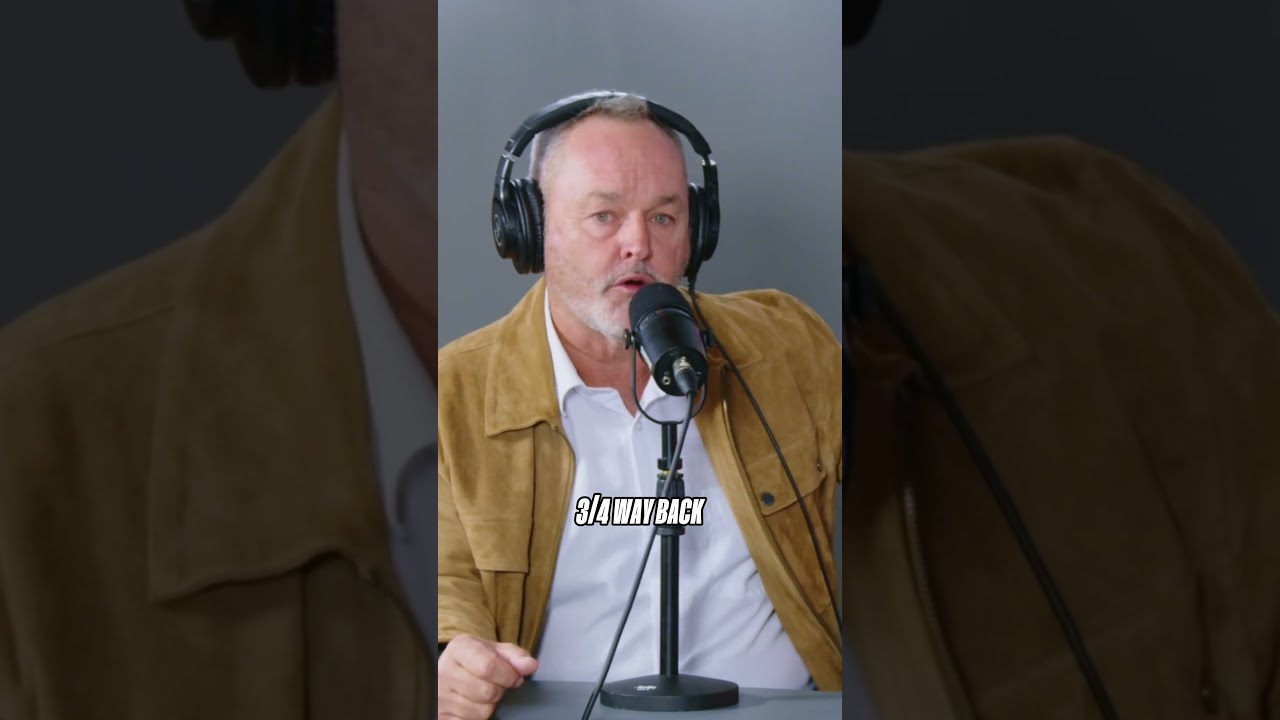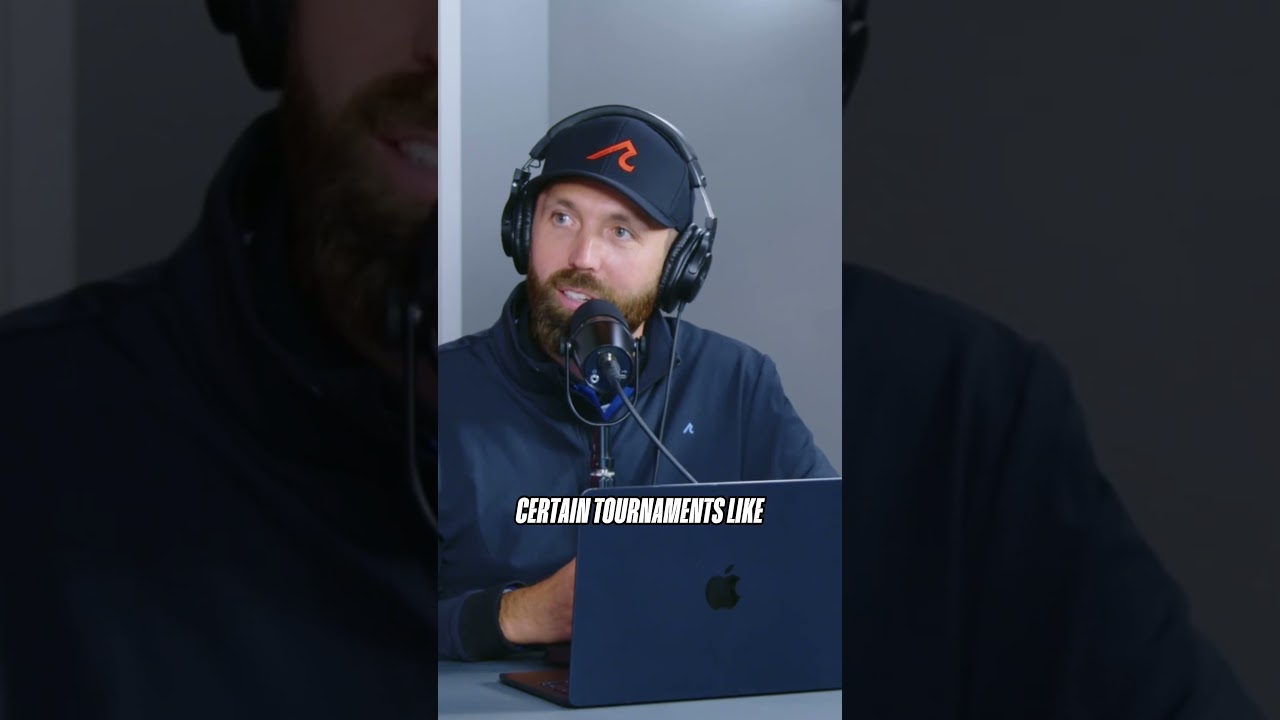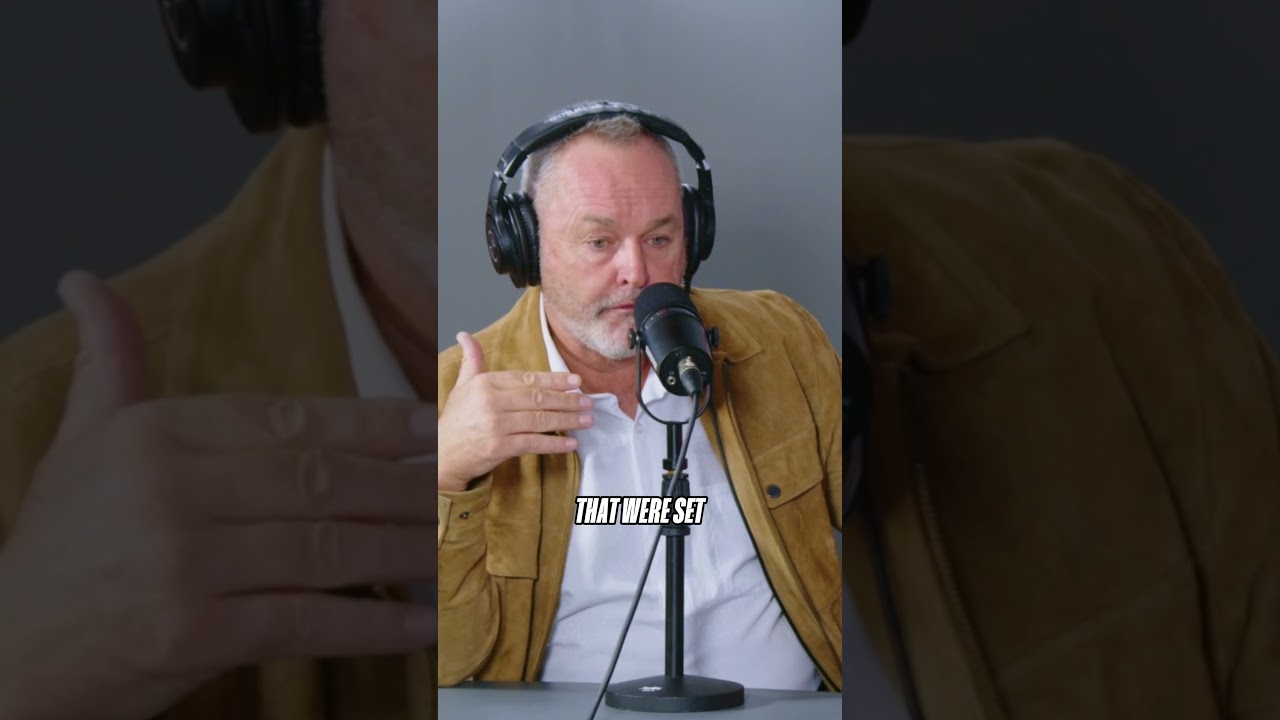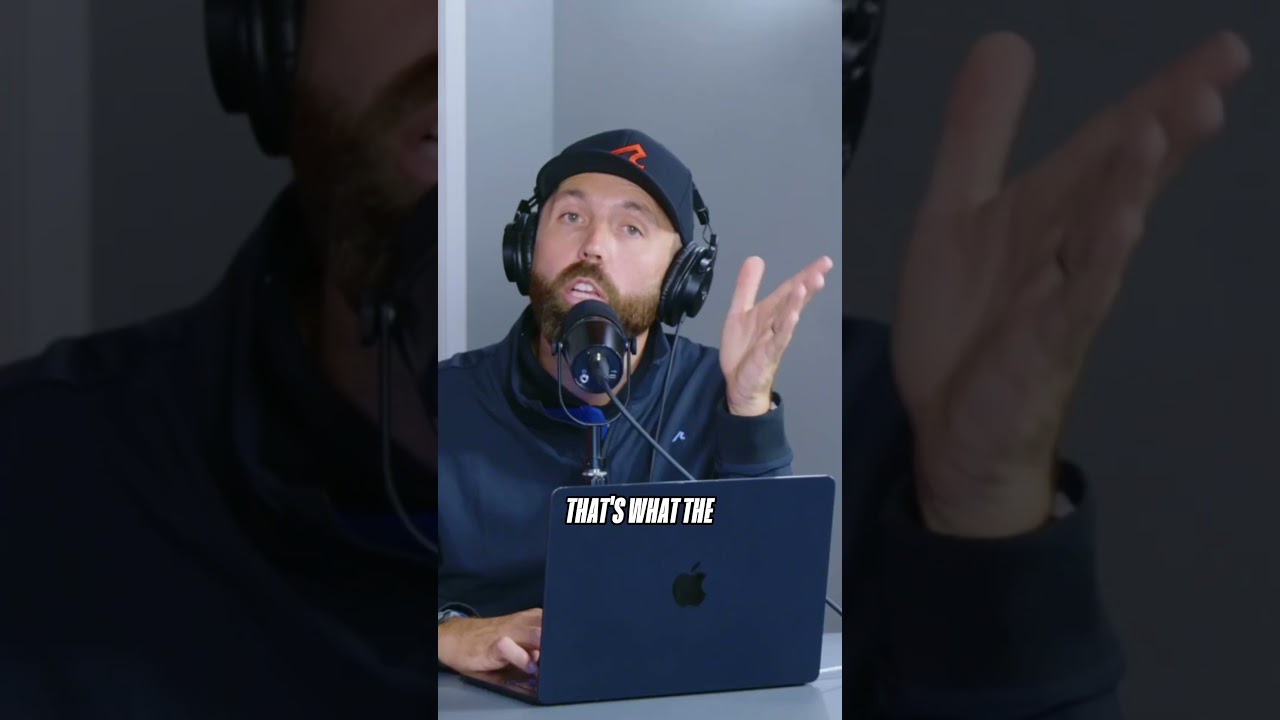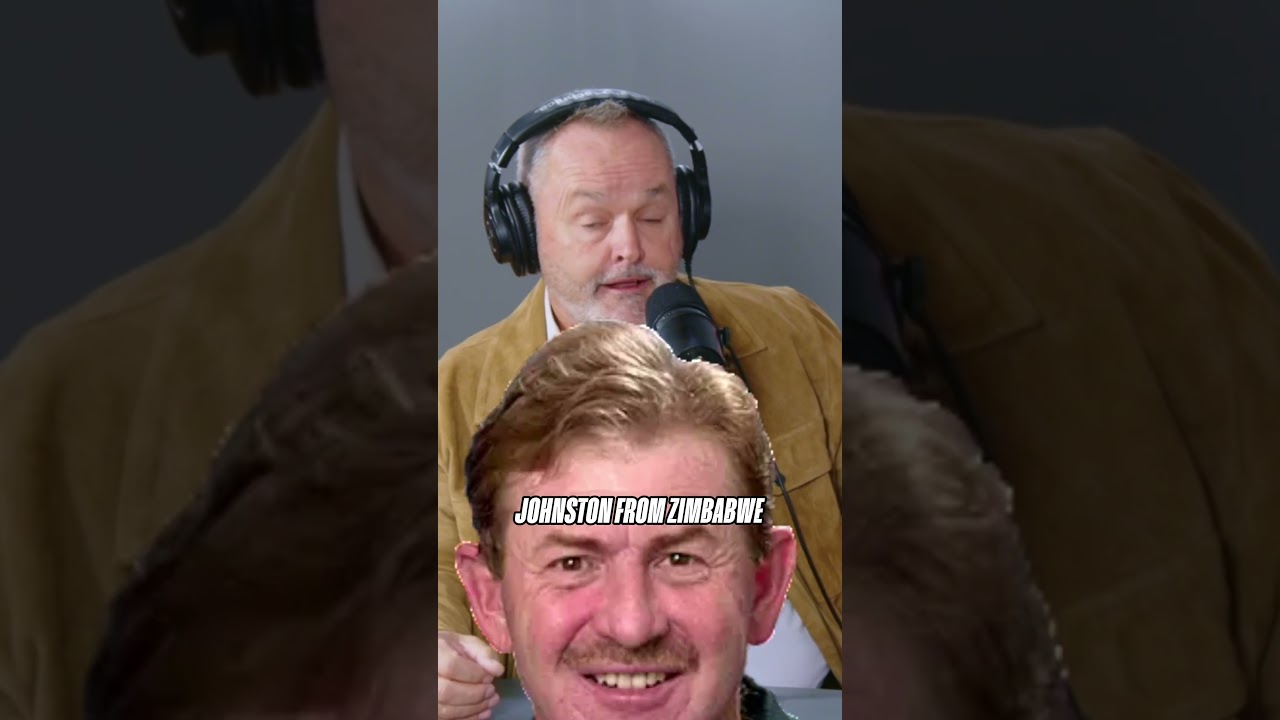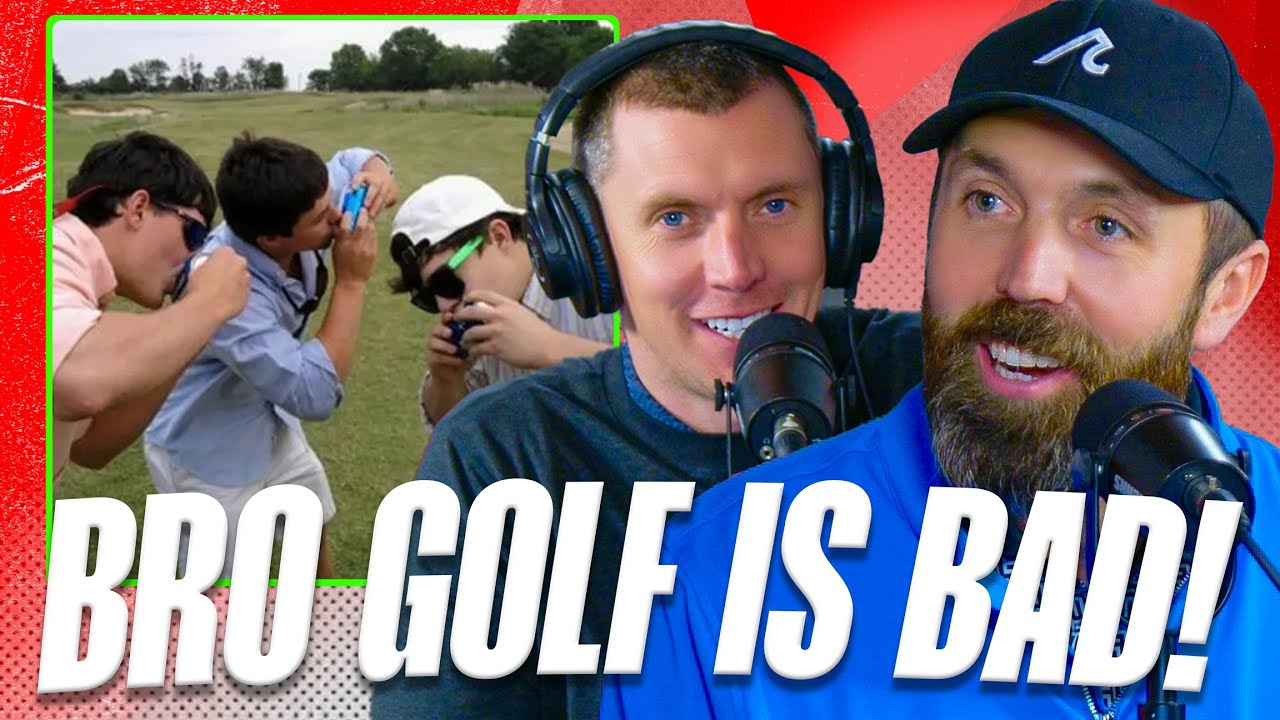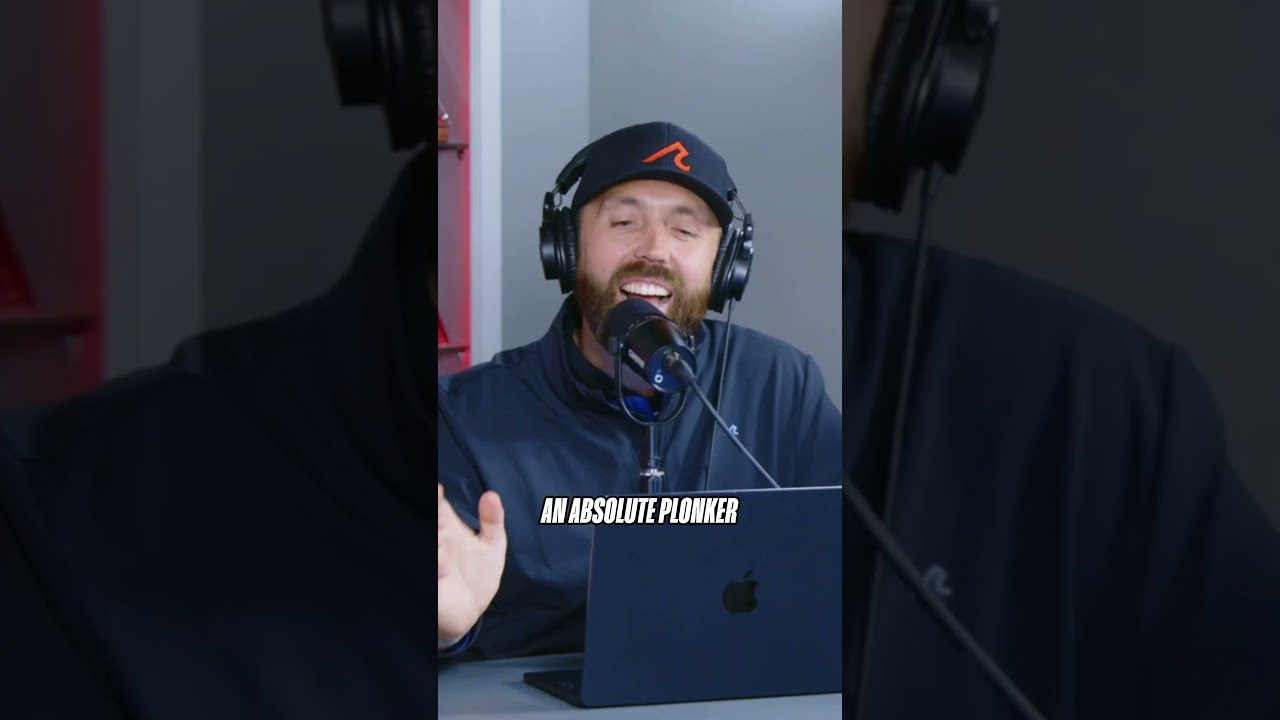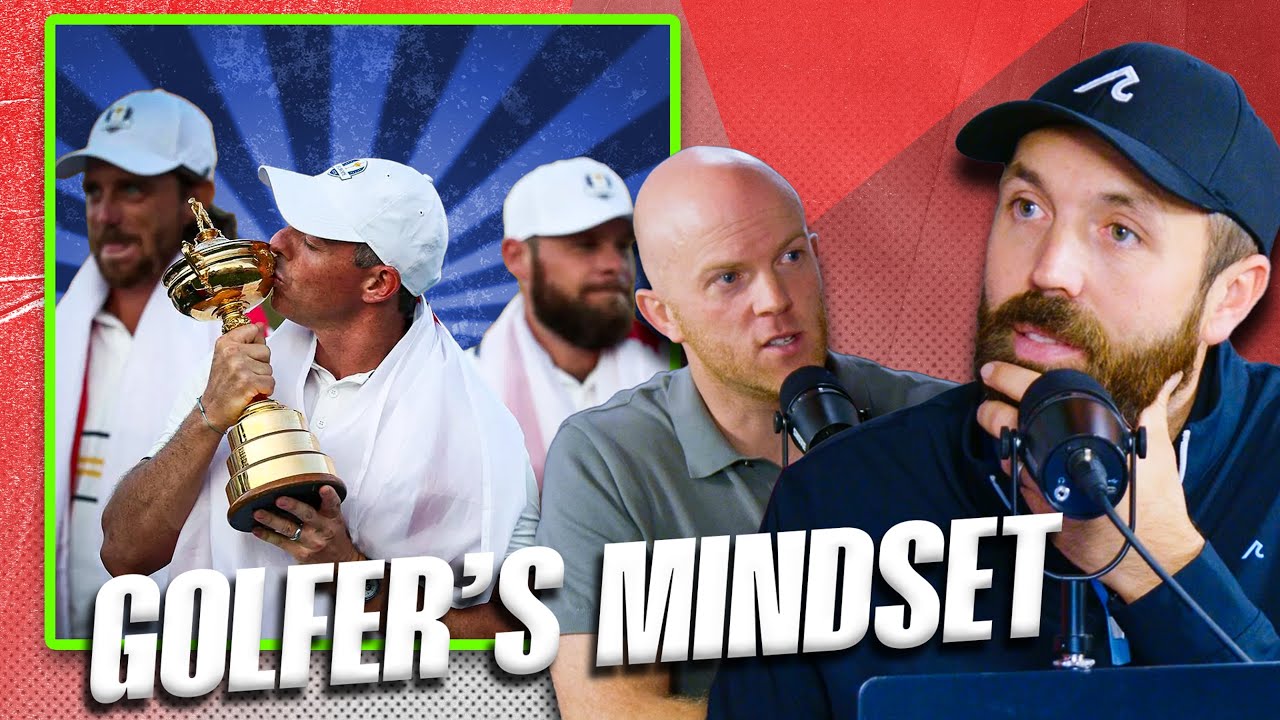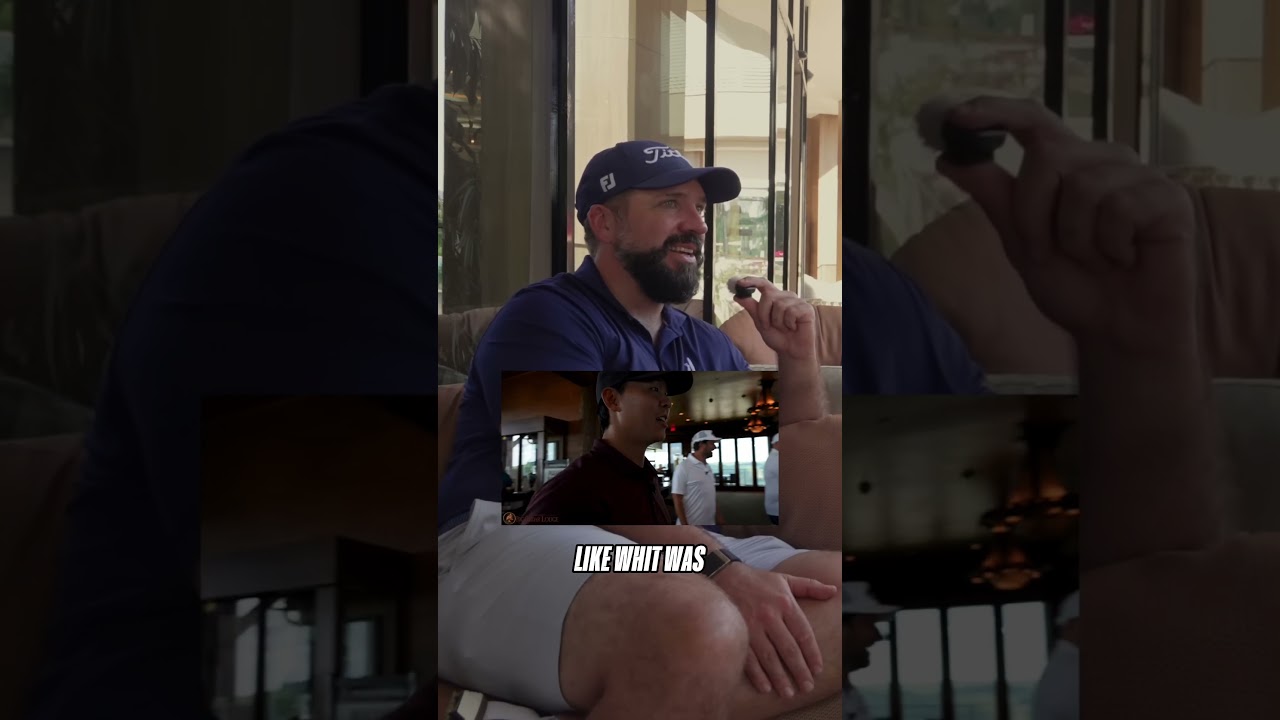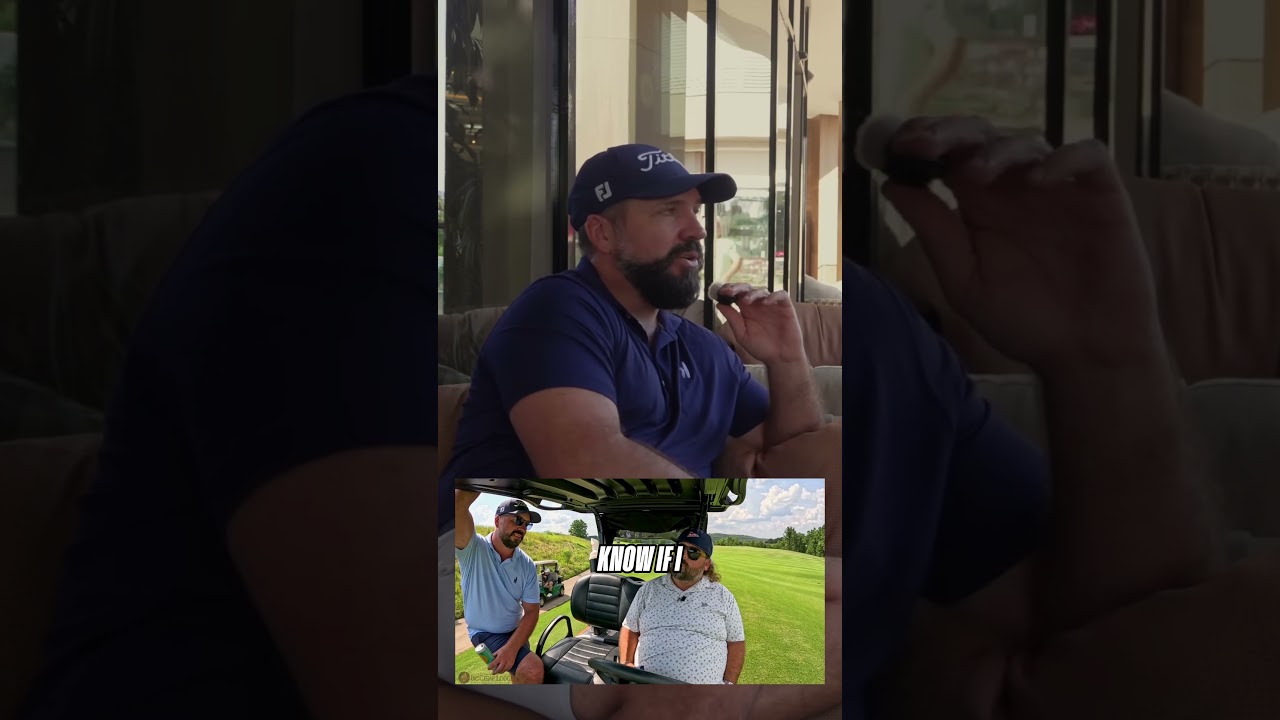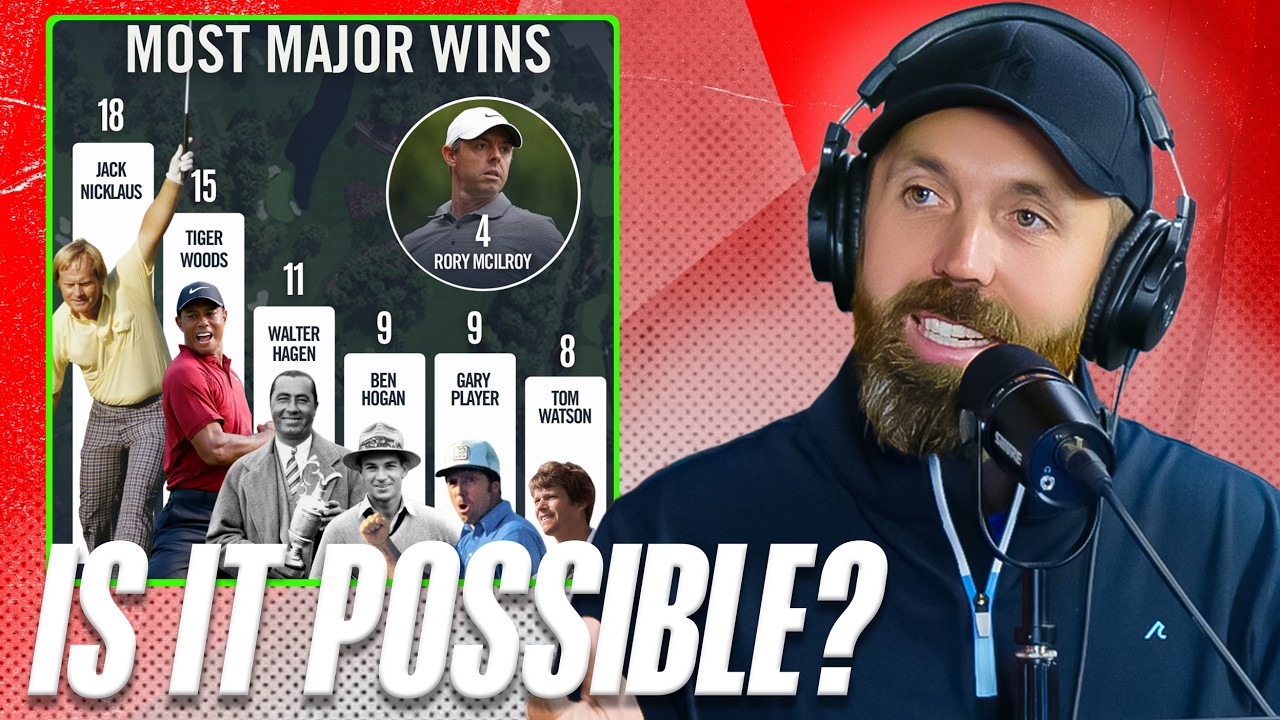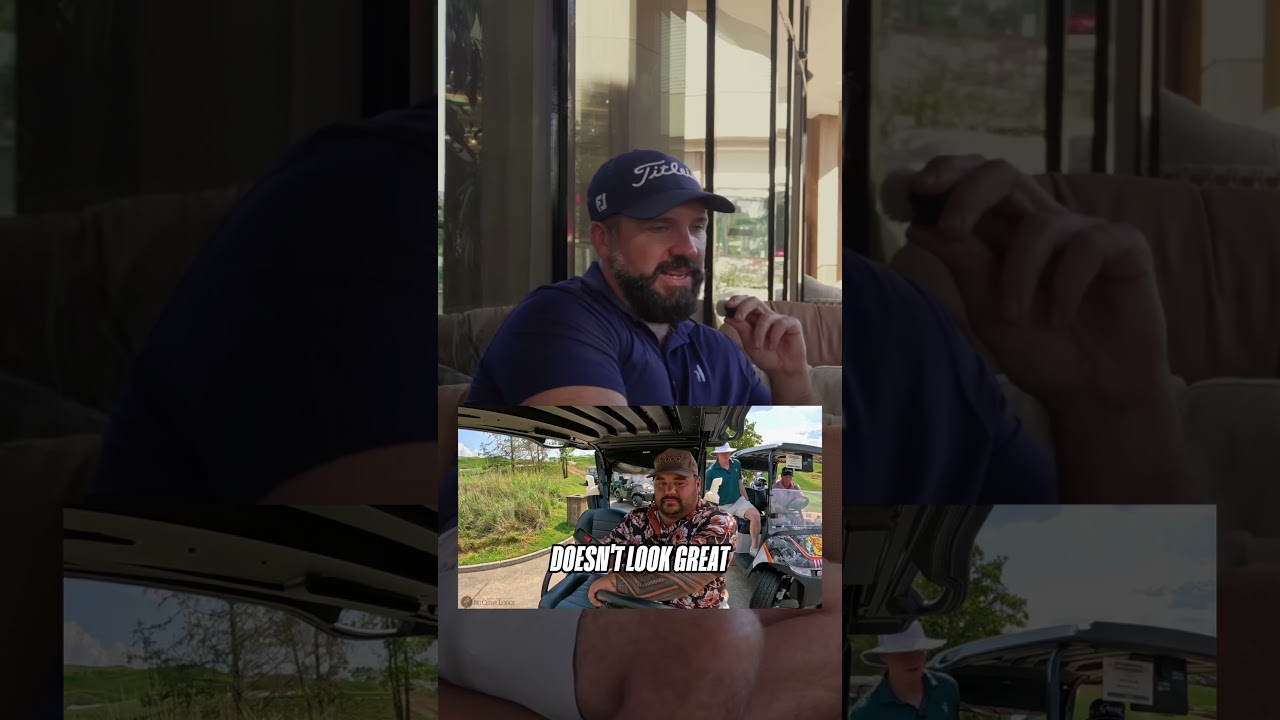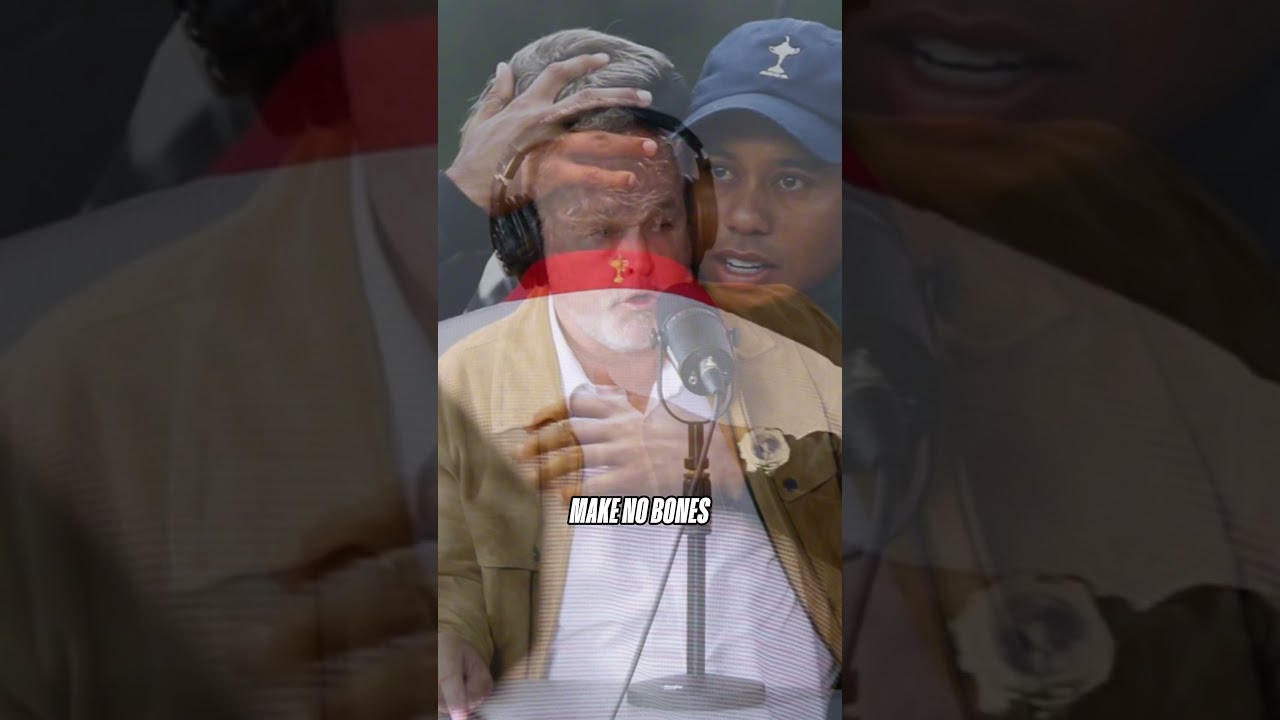All right guys welcome back to the podcast the rickshaw's Golf Show podcast episode 165. hope everyone's having a great start to 2023. we're back with a bang but you might notice I'm on my own today.
For this week and maybe next.
Week I will be flying solo I might get a co-hosting next.
Week because Guy some great news he has had a little baby girl obviously him. And his wife um born on Christmas Eve so guys on paternity at the moment it'll be back very soon but we wish guy and his wonderful wife all the best with the baby and uh make sure you go and jump over to his Instagram and his Twitter to show your support and I went and visited him and he's absolutely taken to fatherhood like a duck in water he's killing it so all the best so he'll be back and I'm sure he'll be tired but he'll be back with a bang very soon now as we start a new year 2023 it's time to reflect and a lot of goal setting New Year's resolutions have started to take place and I've certainly set my goals out this year um one in my golf my life my business and also my fitness and my health um I'd love to know what your goals are have you set goals. For your golf in 2023 is it to play more have more fun improve hit the ball longer have less puts I'd love to know what your goals are down in the comments below. So I think start of a new year is always the time to reflect. And look at what you can achieve in the next.
365 days what can you achieve in this upcoming year um with regards to content that you're going to see on the main Channel we are going to take it to a new level this year. And we've got some incredibly exciting plans some videos that we're going to enhance. And improve and get better break 75 is going to be bigger. And better this year and I promise to everybody watching and listening right now I'm gonna get better and I know you sometimes you love seeing me struggle I get that but I'm gonna get better with my game I'm gonna put an action plan together to make me a better golfer in 2023 I want to get much closer to a scoring average of 70 two or three that's my goal for this year I'm gonna go score on average for 72 that's the plan so I think you're going to really enjoy those also I've got some new series coming out as well this year which I'm really excited about. And I've got more matches lined up these 10 shot challenges with tour Pros I've got two lined up that we might even be filming this month in January it might mean jumping back on a plane again over to America. But there's some really exciting plans coming up so make sure you are subscribed to the main Channel also you would have started to see at the start 2023 driver release season already I've released on my channel the Callaway Paradigm Drive review got to a bit really impressed with those drivers you've probably seen the review three different drivers very different category of golfers who they cater. For this year and you never know I think a bit more testing maybe a few more times out in the golf course. And my and my be putting one of those Paradigm drivers in the back that did really impress me also today.
As you're listening right now at 1pm there is going to be another driver release um I think I can say it new TaylorMade driver 1pm today.
On the main Channel there's going to be the new review of the TaylorMade drivers I've also got brand new ping drivers to test brand new Cobra drivers to test I've not finished testing with those just. Yet so the reviews will be coming probably early next.
Week. Or into next.
Week so stay tuned for those as well but you always get a mad rush for new drivers at the start of the year um Callaway and TaylorMade normally big boys who released at the start of the Year ping have come into this mix this year round and Cobra always released at the start of January as well so exciting times in other news the Rick Shields Golf Show podcast the YouTube channel which hopefully some of you watching on if you're not if you're listening make sure you do jump over to YouTube. And check out the rickshaws Golf Show podcast channel to see our beautiful face is we're getting super close to 200 000 subscribers how good is that thank you. For everyone that subscribed but if you've not yet I'm gonna do a little giveaway I'm going to be giving away some unreleased prototype podcast merchandise now this this podcast merchandise might never ever ever hit the stores. Or be on the website or be able to buy because these are very early prototypes which we might have changed the design quite a bit from this however. to entice you to subscribe make sure you do hit that subscribe button let's get over 200 000 subscribers as a start to 2023 be amazing like this video. And you've got a chance of winning this Rich Shields Golf Show podcast towel it's a player's towel so it's a big one with the Rick Shields golf show logo on it with the headphones and the RS and Rick Shields limited edition on Prototype this might never ever get released head cover you might have seen over the start of 2023 I did a survey I'd love you to fill out a survey I'll put a link in the Top Line in the description finally after many many years I'm going to be diving into the world of merchandise stay tuned. For that's gonna be really exciting but this is early samples on the actual product. And it is phenomenal products. So make sure you check out the head cover in the tower if you want to win these one lucky subscriber is going to win it let's make sure we hit that subscribe button. And get over 200 000 subscribers now this podcast is an interview with a super famous very successful golfer turned putting coach Brad thackson now Brad facts is known as being one of the greatest Putters ever to have lived he has had a fantastic career playing. But now he's turned his hand into coaching and not just coaching anybody but coaching the current world number one Rory McIlroy helping him with his put in his mentality and his kind of mental approach well not only is he now coach Rory McIlroy he's also coached me I managed to get a lesson off Brad Paxton himself. And that video will be an exclusive only. For the podcast Channel and again it's another reason to subscribe to this channel we might do a few little extra clips. And extra videos that will only sit on this channel that's going to go later this week I get a putting lesson from Brad Faxon himself it's amazing. But before that we sat down at Old Marsh Golf Club in Jupiter Florida and did a fantastic podcast all about his career what he thinks about the game has its developing now his philosophy. And mindset on putting what makes a great putter how you can become a great putter all of that is in this podcast coming up now this was filmed I'm just going to give you a little heads up this was filmed early morning at a active live golf course. And we actually filmed on this beautiful Veranda the setting was brilliant the sun was coming up there was a bit of dew on the greens outside it was absolutely epic what we hadn't quite factored him. For was the maintenance staff the green Keepers. And obviously they were doing their fantastic job of making the golf course look brilliant. But there was a bit of background noise which we apologize about we couldn't do much about it. So you might hear a bit of lawn mowers and a bit of cutting but I think it adds to the ambience to be honest with you. So sit back and enjoy this podcast with Brad Faxon interview and again later this week you'll see um the lesson I get off Brad Faxon it's one of the the greatest bits of putting advice I've ever got and again last reminder make sure you subscribe to the channel to have an opportunity to win this prototype never to be released merchandise and again we wish guy in this wonderful wife and his new baby girl all the best and we look forward to seeing his return to the podcast very soon guys enjoy this wonderful chat with Brad facts well Brad this is a real pleasure great to be with you too Rick first being with you uh a venue like this I mean this is quite literally Heaven no this is heaven all Marsh uh was built early 80s right Pete die about the same time the players championship course was built um it was a home to Todd Anderson was a famous instructor Greg Norman uh came here. And practiced Mark calcavecchia um it's a little gem and and you see that little pond in the middle of the ninth and the 18th here yeah yeah every hole you get out here there's something to bug you water Marsh alligators oh my God that's fantastic I might be getting out here. And playing tomorrow yes I might see some of those that Wildlife because it I mean it just looks spectacular I'm just to be honest this is my last couple of days left in Jupiter I've just been in love in Jupiter well you um when you come to Florida. And you then.
You finally get to hear where Jack Nicholas showed up in 1967 when PGA Boulevard was almost a dirt road. And now you know as the players migrated this way Greg Norman and Nick price and then.
Tiger we have 75 to 100 PGA LPGA Tour Champion tour players here for a reason you know you're close to the ocean you're close to the Bahamas Great Golf uh great airports yeah good food tax-free State you know no income tax here. So it's a place you want to be it really is now you might be listening. And watching obviously we're a live golf course today.
Early in the morning it's going to be a bit of Maintenance noise. But that's it's part of the Ambiance that's what I like about it it's it's Lively it's busy because certainly over in the UK right now this is not what we're getting right now no it's frozen greens it's it's freezing cold you're wearing 15 different layers you wearing you've got hand warmers in your pockets it's a very different experience now this is incredible uh. And you're watching you know when we got here at 7 15 you watch the course wake up right you see all the do hasn't been mowing. Or swept yet and you see the The Greening of the course and this is a cold day here yes it got in below 70 Fahrenheit um there's nothing quite like it um I'm excited to chat to you today.
Because obviously you've had such a a legacy in the game from from playing obviously on the PGA tour to now transitioning into kind of a coach. And an expert in your field and working with currently right now the best player in the world you know Rory McIlroy has come on Leaps and Bounds in the last couple of years and obviously you've been instrumental in that development so I'd love to explore that with you a little bit as well but I think when obviously your name gets mentioned everyone straight away thinks of being a phenomenal cutter you know that's that's your that's your superpower in the world of golf how did that kind of happen was that hard work dedication Talent. Or was that something that you kind of found quite natural kind of in your career that being such a great putter it's funny I think of people when when you want to get under my skin quickly. And if you say oh you're lucky you were just born a good putter like I'm like wait that's an insult because the amount of work that goes on into it started as a child when you didn't think of it as work right when you spent all these times trying to hit putts in the green. Or you were playing with your friends. Or practicing late at night in the town I grew up in in the little State of Rhode Island up in the Northeast my dad had a rule that you come home with the street lights come on so he let me play Until Dark and I would never leave you know it was something I never thought of as as a hard thing to do. Or as a job and then.
When it got cold I I would play in adverse conditions and then.
Put the clubs away for a while and play Ice Hockey or you know a load of other different sports so I had a nice little uh Club in the in the town where I grew up an old Donald Ross course with lots of slope on the greens so I kind of learned I call it organically you know just by playing and learning and really what what helped me the most and I say this all the time and I was as a kid I was a caddy you know 12 years old I started carrying a golf bag around. For four dollars you know and I would actually did a couple of rounds a day as well with that oh yeah. And then.
When I got a little bit bigger you put two bags on you made a little bit more money and then.
As the members started to realize oh he could read a green and they'd pay you a little bit more money and um you could always see early in the morning the the do line the ball took. And and I I could see the path the ball took and I started being able to read a green better because I saw at the end of the putts how much the balls broke uh and I kind of keep that embedded in my mind now um and I would say two things to the question about being a a good putter or a great putter um I got better as I got older on the when I got on the tour at 22 I had five or six years where I was kind of a middle of the road statistically put Putter. And then.
I got I got to talk to Ben Crenshaw and this this was a kind of a defining moment he had won the Masters in 85. So this is a couple years later. And I asked him about putting in a couple questions and he said you know when I when I struggle with his putting he said he said two things that were incredible he said I make my backstroke longer than I make my follow through because we've always been taught to take it back low slow. And then.
Accelerate and he says I like to let or allow my head and my knees to move right and you kind of go wait a minute no you're not trying to stay still because uh any he you know as Crenshaw can do he puts his hands on the grip better than anybody that ever played. And he made this little motion he goes it's just a mini swing there can be weight shift. So we'd get a little bit of body movement you get a little bit of leg movement a little wrist a little bit left a little bit just a little bit and it was like as he hit it he kind of opened. And you know you could have a conversation for the entire 45 minutes about the putting stroken what does the head do what do the eyes do what does the neck do do you follow the ball do you look down. And he said I just like to release my body Wow. And his head would turn his eyes would turn and it just looked right and and so with that information is that something then.
You implemented in your own technique as well. And and how you became from a good putter as you said to a great yeah my numbers got amazingly better the next.
Year. For 20 years of it which I'm proud of you know and um one other thing happened but um I always when I tried to stay still and you know I tried to keep the putter back and then.
Accelerate quickly uh my rhythm wasn't as good I pulled a lot of putts when I tried to keep my eyes and my head down I don't know why I did that. But as soon as I said let me see if I if I can move my body a little bit let my head release let my eyes release a little bit it's just kind of softened everything up it freed everything up it allowed the putter to release naturally. And it helped it you know I think most players when they say they've putted their best would be tension free right yeah to avoid not not I'd be nervous. But it helped alleviate some of the the tightness that I had the tension the control um and you know you said you were Dreadful putter earlier I mean I Dreadful to love you my viewers. And my listeners will know this. So actually strapped this a podcast I'm gonna have the honor of having a 30 minute putting lesson from yourself and I can't wait to see what you say but I'm very tense I'm very kind of nervy um it doesn't feel natural to me um I I think we might dive into this later. But I always felt like I was a good putter growing up because I was maybe I wasn't that fussed about knocking it six foot past on the first foot. And then.
Ramming it in the second is less nervous as you get a bit older. And a bit more tentative and certainly when you start making YouTube videos and you have a few people watching you think you know I better not miss this one yeah yeah anxiety. But I've never had I've never had a big pot I've never had a put for to win a tournament like yourself I've never been in that situation where you have to make a put on a Sunday afternoon and I must admit I don't quite know know how tall players do it I I find it incredible I think of two putts um. And I played in two Ryder cups one in 95 at Oak Hill in in Rochester New York and the other one at the valorama for sevi was the captain. And I had a putt on the and the singles matches against David Guilford who had played extremely well with Savvy and on the 18th hole he hit his second shot over the green which was dead it was impossible to get that shot to even stay on the green. And I had bunkered my second and hit a bunker shot to probably about eight feet Guilford didn't get it on the green left it short and then.
He hit an incredible shot to get it to 15 feet and he made that putt for a bogey or I would have had two putts to win the hole to tie the match for that needed half point so I had this eight footer and you can't imagine the amount of people around there the cameras your teammates you see them and you never see that in any other Championship so your heart's racing you know and how you quiet yourself down and I had read this putt it was a little right to left. Or a little downhill so it was it wasn't an impossible putt you know it was a putt that you could make. And I had it I felt very confident over this ball that I I had this start line I had the read and I hit this putt and it never broke and I hit it right where I wanted to go and the golf professional here was Craig Harmon you know Butch Harmon's brother yeah had been there. For years and he said to me afterwards he said I was dying to run out on the green. And tell you that this putt never breaks to the left everybody misses it high and I I wished I'd known that of course but when you do everything right. And you miss you can get angry. And upset and we were devastated because we lost that Ryder Cup by that half point. And four or five of our matches went down to the last hole where Curtis lost Jay lost Haas and it was just awful to watch. But at Valderrama I was playing against Faldo in Westwood. And Freddie couples was my partner. And we got to the 18th hole one up Freddie was out of play immediately. And valo hit a second to six feet a beautiful iron shot and I had bunkered my shot again and had to get it up and down to have a chance if Faldo misses yeah. So I hit my bunker shot just inside faldo's almost on the exact sign Fannie sunison was carrying. For him and they were unbelievably Fanny was behind Nick you know that putter face looks too far right looks too far left Nick standard stood away from it went back up stood away again then.
He missed I thought he was saying that oh yeah I was listening to it as close as I could be. And now I get up over this one and I remembered Oak Hill I remembered all the stuff yeah. And I'm like okay I am not going to step away from this two times I am you know. And I felt like I could have stood over this putt forever I felt so comfortable and hammered it in the hole wow so I mean that's as much pressure as I've felt hitting a putt. And I think that. For everybody you can still do this when you're nervous you know I think people say they get nervous. And they can't function you can function you just gotta allow yourself to do it well you do see it week in week out like somebody who's whole all the phenomenal put on on different levels of Tours like it happens people. And certainly I think in in um the fact that it's it's. For their career it might be a a really important put on a Friday afternoon to make the cut like to make money you know and that that's another different level of nerves because how are you going to pay your mortgage how are you going to pay your bills. So like all those types of pressure and inevitably when people I think think about pressure in golf it does often link to putting because right the aim of the game is to get the ball in the hole oh you talk about that. For the cuts on Friday um you think about how great tiger streak of all the cuts he made in a row um the Grinders that that can stay whether it's Rory. Or John ROM you mentioned him and how important it is. For those in this time of year when it's November and December the qualifying schools for all the different tours whether it's LPGA here or let or you know there's qualifying going on now. For the champions tour those got on television and people watched because of how important that was too yeah. And they don't often get shown did it sometimes on a Friday afternoon I know it. And when you were working hard in your golf game. And you're on tour how much time as a percentage did you actually put into your pudding. Or was it the fact that you you were already a great putter to some degree. And you built up and then.
Did you have to then.
Transition to put more time into other parts of your game yeah it's funny that you asked me that because yesterday I was with Rory McRae. And his whole team up at a cool place in Georgia called a hoopy a golf club and Bob Rotella the sports psychologist was there. And he was a guy I went to early in my career I was one of the first professionals along with Tom Kite Davis love to see him. And I said to him yesterday I said you know I'm teaching a bunch of players a lot of elite junior players. And to answer your question when I got older and my putting was better I practiced very little right not that I didn't practice putting. But I left the course with peace of mind I I was never thinking I need to change my putter can I change the grip you know I was I was happy I didn't need to relearn anything that I was doing. And I'm like how do I tell that to a 19 year old that I did you know this. So but at 19 I never did that you know I was always practicing. And putting it it's different now and Rick I I know you teach you're around great golfers parents want structure in their kids lives right they want structure in their golf game I don't know any of the great players that ever had structure you know they they were out there playing. And practicing and learning mostly on their own yeah right they didn't have somebody telling them what to do all the time there's no manual there is no manual. And that's a great point because a lot of the parents want to know okay what did you do today.
And show me that you improved and I'm like wait you don't have that in practice right you could say you hold 103 foot putts in a row but it's really what you do on the course while you're playing in the tournament of course. And and practice on the golf course is. So important I think it's really important. And I was I was a guy when I when I like to practice say going to the Masters I did much better just playing rounds of golf. And hitting shots that you were going to get there. And now they have an unbelievable practice facility simulating the golf course but it was hard. For me to do it just on a flat lie on a driving range yeah we just had a little pause there the maintenance crew were they were definitely want to feature on the podcast then..
For a second Brad I know they want to show how hard they're working in front of the bosses right here and the question I wanted to kind of lead into then.
Next.
Was almost this idea let's say we have a lot of young fans. And they might want to become great players in the future how much time as they grow up and develop should they potentially look to spend on their putting and I know two minutes ago we just said there's no manual. But as a guide is it is it more than half of the practice time should be put in. Or it's funny if we looked statistics now we have did the PGA Tour is data beyond belief um. And you would say if generally if you hit 70 shots more than half of those are from within 100 yards yeah um as the games evolved. And changed and the power part of the game is. So important now um strength and speed are really important. And you can make up more when we use that term Strokes gained you can make up more Shots by being proficient T to Green yeah um. But I I still think the skill part of around the green putting um because we all know how important the mental side is right your mindset when you play uh. And how devastating to an opponent or your playing partner is when you can hit it off a little bit uh. And scoring is incredible. And my favorite golfers to watch when I was growing up we mentioned Ben Crenshaw. Or Tom Watson sevi yeah to see him. And Roy made a comment earlier this year that he was become more of a complete player yeah. And what he said was look I've I used to win by just beating people up with a t-ball in my iron play. And he says now when that's off I've won tournaments by my putting being good you know he's had several wins this year when he's been plus five Strokes gain putting so I think that. And I call Rory a grinder and a grinder to me is a compliment it's somebody that never quits you know never gives up can just make a cut. And then.
Finish fourth or fifth and have a great week out of a so-so week it's almost like grittiness yeah you see in in really strong players like they just they have that bit between their teeth. And they're not going to let it go. And whether that's whether they're in contention or they're fine to get in contention they seem to be able to have that again that superpowers to be able to make things happen and Rory is a great example of that I like that word superpower when tiger first burst on the scene in the in the mid 90s he won two tournaments the end of 1996. And do you remember him saying you know I didn't have my a game yeah. And and Davis Love and I who were very close friends we were playing on that Ryder Cup in 97 Tigers first one. And we we kind of pulled them aside before he won the Masters and said look tiger you're just new on the scene here we had no idea the greatness we were going to see you kind of offend some of your peers when you say you don't have your A game. And you're winning and then.
He showed us what an eight game looked like at the Masters At You Know 21 year old and we're like oh God that's what that was funny when we told him that you know he looked at us. And he I think he understood. But he just wanted to squash you you know and and he had that you you called it grittiness but the superpower that nobody else has ever had if let's say for example what would you have classed as your as your weaker part of your game when you're out on tour Fairway accuracy yeah driving accuracy was. So was length not. So much of an issue but more accuracy back then.
I was average length you know I had a few seasons when I um didn't drive it well in my they only measured two holes. And I I wasn't ever typically called a long hitter ever but hitting Fairways was always the biggest issue. So the hardest major for me would have been the traditional U.S open course with narrow Fairways really high rough yeah that that was a hard thing to do. But I thrived on open championships and you know Masters where you could kind of hit it anywhere and Escape yeah. And then.
Let's say from a player I mean let's not go from a modern day play let's not go. For a Rory but if you could have had somebody's long game in the area when when you were playing. And obviously then.
Blend into your the rest of your game who would you have picked as having been let's take all your tee shots well Greg Norman and I say that easily because I started playing a lot with Ian Baker Finch and Norman in the early 90s when Greg was number one in the world. And he just drove it so much better and it was a thrash wasn't it it didn't look beautiful it looked explosive. And powerful and we hadn't seen many players do that I started going to Australia to play a lot. And played with him and I was in amazement in 1996. he asked me to play a practice run on Wednesday the Masters. And and we went out late and um I said Greg if we play at 11 o'clock we're going to miss the par 3 tournament he goes welcome I go whoa can I say that yeah okay. So and I'm like oh um so I had played in a few Masters but I'm like I'm a traditional guy I think the par 3 tournament I wanted to play in. But I also wanted to play with Greg Norman late and just see his preparation yeah. And he was working with Butch Harmon. And that day was just the two of us. And most people were going towards the par three. So we started playing with not a lot of people out there and he was playing without a glove. And I don't know if you remember but Greg used to kind of re-grip his hands on the club like Sergio did later. And and Greg played that day with like one or two little uh Waggles and Bam he drove in that practice round as good as anybody ever seen a guy driving I said this guy's gonna win yeah. And Sunday when he's playing with Faldo in that final round I was playing a couple hours early. So I finished my round as they were playing the ninth hole. And Greg had a sand wedge into that front right pin hits it on the green spins it all the way down the hill makes a double loses his lead and then.
If you watched him play that back nine he played with a glove and he kept milk in the grip milk in the grip and he couldn't get it to go and you can tell the pressure affected him you know how you know he wanted to win. So badly so badly and a devastating loss for him um I'm gonna then.
Flip the question slightly other way if one player oops tomorrow could have your putting ability okay out of the current crop of players now who do you think would maximize their potential more. So is there a particular plate you think God if I could put. For that player he'd have won 10 Majors by now I mean there's there's two guys that are probably a little bit past their Prime. But I I would have said Adam Scott. And Louie yeah. And you know Louis had a great putting year a couple years ago working with Justin Parsons I mean he was one of the top Putters on the tour. But it did hold them back. For a while yeah um. And I mean I think Louis was a guy that was as likable a human being on. And off the course yeah tremendous dancer if you didn't know that I didn't know that I've seen him do things at night you would just die tremendous dancer yeah um. And um I don't know I I when I played Steve elkington had the best looking swing if you were looking aesthetically pleasing Louie had that he was the next.
Steve elkington um. And a guy that you would have wanted to win a lot more so I would say Louis and Adam I wish I could have kind of handed them something and the world would have been a happier place would you have you ever coached them would you have wanted to coach them were you available. For coaching at that point in time you know I started working Rory in 18 but I've been having more conversations with the player and I didn't have like a home base no you know I spent time talking to guys like Gary Woodland. And Justin Thomas Patrick Cantley some of them on a more formal basis but nothing like now um and I was not more of them coming to you these players yes yeah. And being here too was you know like Justin Thomas is close with Rory he's a member at the Bears Club um had some interesting talks with him. And and Louis lived at the same place I did. But we never really talked about technique at all and I didn't want to be the person that would push that on him yeah you know that wasn't my Approach yeah you were that as a as a helping hand potentially these are friends of yours the people who you know want to listen to you your knowledge. And your depth of the game is something that's super important well. And it's interesting now you know you see almost two types of players like a Justin Rose that would go out and you never see them on the Range without obviously his caddy but his swing coach um some kind of sports psychologist performance coach maybe a short game coach potting coach you know yeah. And then.
You see guys like Rory that rarely have anybody with him at a tournament yeah. And and those two approaches are vastly different I think some people like to have somebody's eyes on them at all time yeah. And then.
Like Rory's better when he's just by himself picturing a shot and swing that's the people are different. And not in that way and you can't say one's right or wrong for everything not a chance um you're obviously very synonymous with Titleist and Scotty Cameron where did that kind of love affair with Scotty Cameron come because I love following you on Instagram when you unbox these incredible exclusive limited edition never been seen before we're gonna teach you later. And head covers and and I'm like I'm drooling and I'm like oh my goodness these are the nobody gets to have these things. And obviously I'm guessing your relationship with Scotty is very strong you've obviously worked had Scotty Cameron putters yes. And how did that all come about. So I mentioned Crenshaw before somebody that improved my stats Scotty was hired by the Acushnet Company by Titleist in the mid 90s the town I grew up in Rhode Island was 25 30 minutes away from the headquarters where all the golf balls were made it was called a cushnet which was a river in Massachusetts where all the rubber was been sent up on these ships where they remember the wild balls that's a thing of the past I know that's why the name Acushnet came from yeah. So I've never played another golf ball um other than titles in the golf shop at Rhode Island Country Club never sold another equipment uh company's golf balls yep so when titleists um in in Titleist equipment contracts they never required you to play all 14 clubs okay they would much rather have you happy. And playing well of course than struggling with the particular club that they didn't suit you so as long as you're wearing the hat right the head cover on your drive the golf ball right that was that's their Mainstay. So um when Scotty comes to Titleist in 95 or 96 I was using a ping putter called a my day yeah. And I said I I didn't know this um. But the equipment companies patent rights expired after 12 or 13 years so okay it was a free-for-all. So that's why like the most popular putter when when I was a ping answer yeah all the players copy that. So Scotty turned the answer into the Newport style and then.
Everybody copied those similar to what the spite has happened to the spider a little bit now yes it was Taylor Made. And spider now obviously Callaway do a version everybody has a version of what was a two ball. Or a little deeper Mallet correct um and so Scotty comes he kind of makes it takes about a year to make a putter that I felt comfortable using WOW and and now I've got a trophy collection of some cool Scotty stuff and he he likes to have you know these unboxings and this month's box just showed up yesterday I'll show it to you when we're done but he's got a putter head cover that's Rudolph the Red-Nosed Reindeer with a little bell under it it's just and it says Scotty Cameron I mean that is there's literally there'll be people watching. And listening that will be drooling because Scotty collections Scotty Cameron collectors are a really strong like very um what's the right word um they have a love. For for the collection of it they're very determined they're very passionate is probably what I'm trying to get no question um. And and anything if you did a head cover with anything on it it would sell out like that he has a devout following. And it's funny you know Danielle's over here who helps me with my Social Media stuff and the post and when you look at the comments from some of these people some of them get so angry yeah oh. And I know you guys and I'm sorry for giving you those angry comments I probably shouldn't do that. But I I I'm looking I'm like oh my goodness I mean not many people in the world if anybody gets those kind of nice little boxes. And presents no. And you know obviously the consumer has to pay for that to be a member of the club and you pay an annual fee and a lot of times those limited edition head covers that website crashes they go how does that happen when I'm ready to press the button. So how many posters do you have in the collection ah um I probably have 50 putters I probably have three. Or four that I've used in my career I don't use I haven't used many different ones I've used the same putter for a long time I must admit I watched the clip of yourself that says you shouldn't tinker you shouldn't mess about too much and you shouldn't change things that often am I right in saying that well that's something I believed for myself I I did a little Master putting thing with Nick Faldo the other day. And he he changed Putters during tournaments he won the first Masters who won in 89 he used a bullseye for three rounds and then.
Completely switched to some kind of Mallet the final round I'm like how do you do that my viewers will know I I switch Putters you do a lot I switched my putting grip a lot have you ever carried two different Putters in your bag in the same round uh I got a lot of knots from here my guys are not too bad. And I I've uh and it's maybe might be no shock I'm a terrible potentially um. So wait I'll tell you one funny story Kyrie Webb came to see me years ago for a putting lesson and um obviously one of the best women players of all time and I said bring the Potter's you use you know if you have a few bring them there. And I'm not making fun of her because I know how this can be. So difficult she showed up with 13 Putters and she had seen Dave Stockton and Stan Atley the weeks before me and I said look if we were going to play in a tournament starting tomorrow pick three. So she picked three they were all really different in Styles. And I said when's your next.
Tournament she says two weeks I said okay. So we went and talked and I said we talked about being consistent like if we're going to breed consistency in how you putt let's breed consistency in your approach to your practice to the putter that you're going to use. And I said let's make a commitment when you walk away this afternoon that you're going to take this one putter you're going to practice with it. For two day two weeks and use this in the tournament Fair she stared at me like it was the hardest thing she'd ever been asked yes it's fair I said okay. So we spent time doing stuff she called me two days later I couldn't do it. So that's what happens to people you know yeah. And I said because I just don't want to be the next.
Person you pass through you know. And you're gonna go find some magic answer from somebody else but I mean it goes back to what you asked me before like did I practice more. Or less I I was be I was always going home with um an inner confidence that I could do it. And I didn't need to give myself a lesson at night I'm going to very quickly before I come on to a topic I'm super interested to learn a little bit more about um if. For viewers and listeners and this might be this might be too hard and I don't mind if you say it we can do this in a lesson later that we're going to have is there anything that viewers. And listeners need to focus on me mostly or more than anything else we're putting is there is there a big mistake that you see with amateur golfers that you think oh the majority did this slightly better a lot more people with better Putters yeah that's a great question because I've started teaching at a club down here Jupiter Hills. And teaching a lot of amateur golfers that are you know 10 to 20 handicaps a lot of them that are better than that. But I would say Potter fitting like is important like the length of the putter the weights of the putter um. So you would rarely go buy a driver now without testing it right you would never get a set of irons without hitting balls and making sure you have right lengths weights so so many members don't have a putter that's the right length they have no idea the concept of what weight is Swing weight total weight no concept of um The Stroke the path should be in out you know all these things that. So when I get a tour player it's they always have a putter that's the right size for them you know you'd like to think yeah definitely. But if I had to say one thing that I see most consistently um with the better player versus the bad golfer the average golfer is their stroke is. So slow it's so slow the backstroke is. So slow that it's it's impossible to get consistent contact and you know you've seen you know all these different putting devices whether it's Sam or quintech or blast motion and when I measure the putting stroke of bad golfers it's half the time and a lot of times and and they're not only is their backstroke slow it's short right. So you know when you talk about pendulum yeah. And you look at an old grandfather clock and that The Swinging arm there it's a beautiful Rhythm and Tempo to it and it's symmetrical on both sides I never see that in the average golfer um there's actually a beautiful grandfather clock just in the hallway there and actually walked past it this morning and I actually noticed how beautiful this motion was weirdly how you've said that today.
Yeah um. And and that's fascinating thing to say because you'll see a lot of golfers who will go back slow. And then.
I'm guessing then.
The fault is they'll speed up too much yeah there's a lot of hit you know I think good players felt like they collected the ball you know. Or covered the ball and then.
I mean you see a lot of different things. And you know average golfers a lot of body motion you know they're moving and guiding and steering watching the putter I bet you must watch the putter once in a while I can't eat honestly my head scrambled at the moment we put it yeah. And I had scrambled I don't know if I look at the ball the pots of the hole I've tried everything but I've been like so I'll be interested to get your take on it out there this morning um and then.
Coming more to my final point you work with Rory over the last couple of years obviously he's now the world number one he has had a phenomenal season that bar and made you know a huge major tournament you know he's he's absolutely killing it what what have you done to help him what have you done to assist him obviously it's a team effort I get that but this he's definitely improved his game enormously this year he has I mean we're getting on almost five years now uh. And I was in five years sorry we started working in in the march of 2018. So you know a few more months it'll be five years and I mean this was his best partying career statistically he's ever had uh. And a little bit like later in my career where I feel like I practice lesson I don't think he has to go to the putting green worried you know he he has some Tendencies like everybody does. But he's able to manage those and there aren't a lot of them and what I've learned from Rory I've learned way more about the game than I could ever tell him is he he thinks about because swing. Or his thoughts in a simple little phrase I could give an example for a Swiss a swing that he might have pause at the top something easy that you can visualize I think a lot of players when they get too detailed. And can't explain what they're trying to do that's going to be really complicated when the pressure's on yeah um. And with Rory there's just a few things in his setup that we try and monitor he could explain those things very easily and and where and what he likes to feel in a stroke I don't think he's out there trying to guess anymore he he's used the same putter now. For a couple years with the mouse and that's been very from the grip yeah it's the Ryder Cup grip. And I held it yes it's worn out like that bugs me you know. And um but would you recommend him to change it or not a chance and I that was in my career changing a putter grip was the thing I I dreaded changing it because you know the feel of that grip the weight of that grip the texture you know the the stickiness I I hated getting to a point where the putter grip got a little worn where you had to rub it out with a you know hot water on the towel. Or something like that to especially when it got cool like going over to playing in the open um. But yeah that I didn't like changing putting putting grips. And he's had that thing on there for a while well again similar to similar to Tiger you know he's hot there oh yeah change from that ping nothing obviously stealth it out that puts a group he's had a few little experiments over the last few years. But you know it's interesting when you look at potentially some of the best they've don't change things that often no. And you think about as the putters evolved. And I think set was the stat says Scotty says 70 of the players now are using Mallet Putters right um. And if you looked at the old style Putters whether it was a bullseye. Or an 802 blade or a pig answer or Scotty's Newports those kind of went together with a smaller grip and you used to compliment Somebody by saying you've got a great touch you've got great feel you've got great hands right one that you liked somebody said boy you got great hands that would be something you'd go I like when somebody says that now these grips are massive you're taking hands out of it you're trying to put big muscles into it. And I kind of Wonder is that the direction we need to go. For so that's one thing I'm going to look at when we're on the putting green later I'm going to give you an insight to maybe my put inside okay okay if I go into a pro shop okay. And there's a row of Putters there might be 30 Putters on the Shelf there okay I look at the grips first to determine which which Potter I'd pick look at the grip first what are you looking. For so I'll straight away discard anything grips I'll take all the skinny grips out but nothing skinny nothing's skinny oh no. So so even if the head I'll take all the skinny ones out so I'm left with only the thick ones and then.
I'll start looking at the heads of the thick ones isn't that funny I think the biggest difference between. And you know Brian's over here the director of golf at Walmart when a when a member comes into a pro shop and they're looking for a driver head or something like this where they pick a club out of my bag they always pick it up and they shake it and they go it feels good and I'm like a good player picks up the club and puts it down and goes that looks good correct looked at the head first right you this looks nice you always get when I used to work in a pro shop you got a guy coming in and shake it and go oh that's quite whippy yeah shakes that's not telling you how wiffy is that's just oh we're getting all the noises now that's last night's last night's dinner we might. For the first point in this podcast have silence you get the crows that's nice that's perfect um yeah. So um it is it is funny seeing. So I've got a somewhat uh similar story and I have to tell you super quickly because he would love the fact I've brought this up a friend of mine Rob Potter he's been on my channel a few times he um he did something similar he came. For his first putting lesson and I said well come down he said what Potter drop me to bring I said we'll bring them all he had mallets blades broom handles left-handed Putters kids Putters the works I was like whoa we've got it we've gotta we've got to get rid of some of these. But it was similar sorry to what you were saying before um okay great I I think what's. For me put in and and I know it's obviously as we've mentioned is the kind of superpower that you've you've managed to develop is is a game within a game it's almost it's somewhat separate to golf from a power standpoint. And a hitting but the main objective is obviously getting the ball in the hole what I find fascinating with putting is almost everyone's really on the same Level Playing Field does it matter if you're super strong. Or you're tall are you shorter I'm guessing. So unless you can correct me. And you would think that strength doesn't have to play an important role. And because you don't need to have incredible speed you have to have feel I I think when I when I hear some of the stuff Rory said um about what we've done he says we talk about situations a lot you know it's it's not just face to path right it's not all mechanics it's about what happens in you know having been a good Putter. And haven't played for a long time doesn't mean I was going to be a good coach necessarily. But talking to him about whether you use the line or not and what how do you use the line do you use the line to aim up the face. Or do you use it. For your start line um you know reading a putt what do you see how do you see when you're what's the last thing you look at on a breaking putter you're looking at the start line the you know the apex of the putter. Or something like that or you see it all at once do you see it with color do you see it three-dimensionally. But you know for Rory I think one of the coolest things when he won the Players Championship last year he had a 12 foot putt left to right on the on the 12th hole. And he had under read a bunch of left to right putts previously and we talked about playing more break and taking High lines and I remember seeing him step away from this putt as he was over it readjusting the line to play more breaking. And making it and that's things that I don't think it makes as much of a difference to an average golfer things like that. But it's millions of dollars for the best players in the world did you did you ever imagine moving into coaching. And are you enjoying this kind of transition into rather coach yeah I mean it's it's very gratifying to help anybody out um you feel in a way you're giving back it's frustrating because well I think of the best athletes over here Michael Jordan obviously was the best basketball player. But he wasn't a fantastic coach and I don't think he had an understanding of how people couldn't adopt what he did. So naturally Wayne Gretzky the Fantastic ice hockey player the same way even Jack Nicholson away was. So good but he could talk to players but he I don't think he coached them particularly well it's a different skill set it really is. And I've I've come at it now looking at all the great coaches that are out there David Ledbetter was my first instructor first lesson I ever had. And then.
I see that the new guys and all the data out there and I'm like how you assimilate all that and then.
How do you translate it to someone in a helpful way because I think all these guys want to appear really smart that they know everything. And that that they want to be able to measure everything but and I see instructors of today.
Criticizing like a Butch Harman because maybe he didn't understand ball flight loss. And I'm going you see how many players one plan. For him I mean they die to have his record we were at the Floridian yesterday ah. And uh we had Claude on the podcast yeah. And that was really interesting just listening to to again talking about making it simple yeah it's not about data I feel like golf sometimes has moved into this world where everyone feels like they have to be a golf scientist. And it feels like it's moving away from coaching coaching's the relationship it's the communication it's getting the best out of that player and every player is different in every single player reacts to the situation is different they want to be they want to be explained to something different that's why I try my videos to make things incredibly simple because it doesn't need to be complex complicated. And I think the academic wants to have everything thrown at them like they're in you know a graduating class. And getting their MBA but um the simple stuff that players think about. And Rory is the best example of that he doesn't think about a whole lot. And and Rotella would say something that the today's instructors don't like is you know he's trying to get players to see a picture see a shot. And who painted their pictures better than tiger and Jack when they're behind the ball Rory does it well. And it doesn't have to be something that takes a long time Faldo did it too you know with the practice swings. And trying to see what he wanted to do. And then.
Reacting to that yeah. And that's that's what I did on a putting green. So well and and I made it easier and not more difficult do you find it hard now that's my last question you find it hard now when Rory is in the tournament. And you watch him from the TV whether you're here at home or whether you're in the tournament is it hard now to watch a player that you've coached that you you're. So desperately want to perform well is that hard. For you do you switch off do you not watch. Or do you watch every everything that you can I try to watch as much as I can get up early when you know it's in Europe over here. And they're five or six hours ahead um but it's it's gut-wrenching sometimes when you have no control I I've never felt like that playing by myself we had full control we had full control now I I much more appreciate. For my wife wife who watched me stand around the planet yeah well is it when you don't have control of it's really tough Brad you've been a pleasure today.
Thank you. So much and thanks uh I know we've had a little tricky situation here with some of the maintenance but it's obviously it makes this golf course look so phenomenal uh we're gonna head on to the putting green now which I looked at before and it might quite possibly be one of the best putting greens I've ever seen in my life the perfect putting green size of it the amount of slopes and undulation so it's got enough flat spots where you can practice if you wanted straight putts. But long putts perfect condition and um if you play Old Mars tomorrow bring some balls they call golf balls here Marsh food alligator food yeah well I'm gonna go. And grab my 17 Putters out the car okay. And I'll meet on the putting green sounds great [Applause] [Music].







